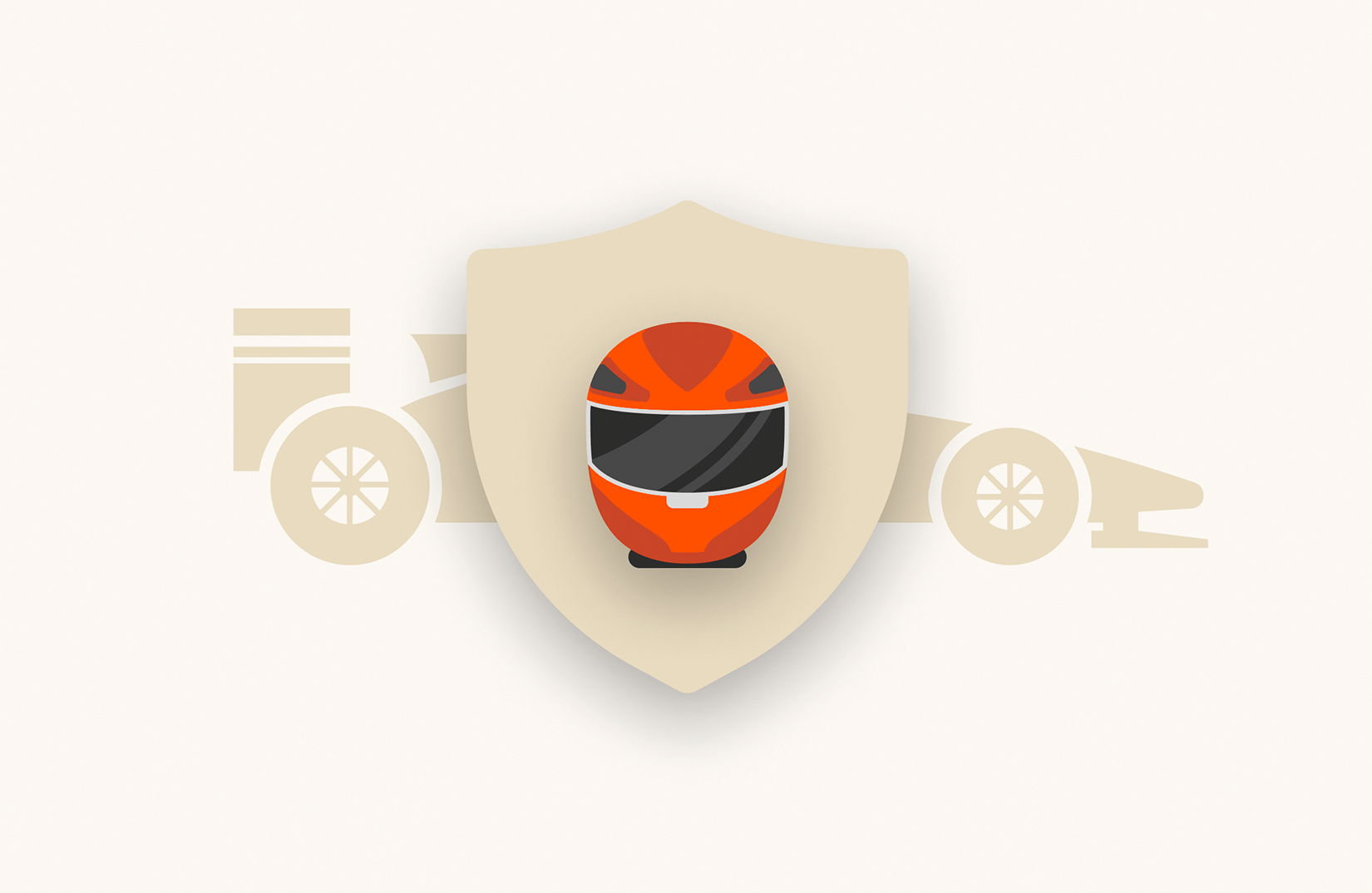In the world of F1 safety, cars aren’t just engineered to be fast—they’re built to keep drivers alive. It’s all about prevention: reducing risk where it counts, making the landscape safer, and preparing for the worst. In fact, just this year at Silverstone early prototypes for rain spray guards were tested to improve visibility and safety during rainy races.
It’s not unlike how organizations reduce risks to their data—disaster and cyber events that require the right precautions and lightning-fast responses.
F1 Safety Innovation
Formula 1’s track record for safety is almost as impressive as its record-breaking speeds. For a sport that delivers high-octane thrills and the fastest automobiles on earth, drivers are in many ways safer than they’ve been in 70 years of F1 history. F1 has implemented and engineered numerous precautions to keep drivers safer before, during, and after an event on the track. These range from car and track features to rules, flags, and safety cars that notify teams about dangers on the track.
As you’re watching this season’s Grand Prix races, keep an eye out for the following:
The Cars
Let’s start with the cars. Of course, they’re faster than ever, but they’ve also become far safer—all without sacrificing performance. From fires to flying tires, these cars are designed to withstand a lot. You might not see all of these features on-screen, but they’re there, and they provide some serious peace of mind.
- “The Halo.” Introduced in 2018 and crafted from aerospace-quality titanium, this feature provides an aerodynamic shield to protect drivers from debris and other cars—or even from flipping over, as evidenced by Zhou Guanyu’s crash at Silverstone this year. Lewis has since said the Halo saved his life during his run-in with Max Verstappen at Monza.
- The Accident Data Recorder. All F1 cars have an Accident Data Recorder, which is like an airplane’s black box. It captures information about crashes and collisions, as well as data about safety equipment efficacy. This helps engineers improve F1 car safety and can inform medical teams about the severity of an impact so they know what to expect.
- The “Survival Cell.” Engineered from 6mm-thick carbon fiber composite coated in Kevlar, the Survival Cell is aptly named. It can suppress fires, resist penetrations, and absorb huge amounts of energy during a crash. The fire-resistant foam can be remotely activated by teams or by the driver from within the car.
- Upgrades to wheels, headrests, seatbelts, and steering wheels. Then, there are the features every car shares. But these aren’t your average cars. Wheel tethers keep both the crowd and other drivers safe from tires traveling hundreds of miles an hour. Headrests are designed for massive G-force absorption, the HANS device protects from neck and head injuries, and seatbelts act like harnesses to keep drivers secure.
- Safety data in the car. Sensors in the car report issues with engine failure, tires, and more back to the team in real time, so they can tell the driver to pull over or into the pit. The steering wheel lets the driver convey issues back to the pit team, view live data about the car, and make adjustments on the track. Driver-facing cameras record data about an impact, too.

White Paper, 7 pages
Learn What’s Helping CISOs Sleep Better at Night
And how you can too.
The Tracks and Rules of the Road
The layout, local environment, weather, accidents, and even animals can throw a wrench into a race. F1 teams and drivers prep for each race by learning the tracks by heart, but sometimes the unexpected happens. F1 keeps tracks and teams safe with:
- Weather alerts. Rain, wind, and heat all impact driving conditions and how cars may be tuned before a race.
- Marshals. These volunteers play a huge part, waving safety flags, showing up on-site at crashes, and offering assistance with training in fire safety and more.
- Better barriers and wider runoff areas. Remember when stacks of hay bales lined F1 circuits? Things have come a long way. TechPro barriers are designed for the absorption of massive amounts of impact, keeping drivers and spectators safer—like during Max Verstappen’s unfortunate spinout that cost him the win at Azerbaijan earlier this month.
- The flag system. Every sport has rules, and F1 is no exception. The flag system sends signals for both drivers and teams alike when conditions change or there are hazards on the track. For example, yellow flags note when overtaking is prohibited due to danger near, on, or blocking the track. A red flag suspends racing. There’s even a flag for when there’s an animal on the track—because no driver wants roadkill to ruin his chance at the podium!
Other rules, such as the refueling ban and the super license, were implemented to improve safety. These days, drivers have to pass tests and make sure they’re experienced and knowledgeable enough on the track to race.
Driver Suits and Gear
Helmets, gloves, suits, and on-driver devices insulate drivers from the elements, but there are plenty of high-tech components that make drivers close to bionic. These include:
- Accelerometer earpieces. F1 drivers have accelerometers built into their earpieces. These tiny devices gather data on forces acting on the driver and their exact head movements during an impact.
- Biometric gloves. Glove sensors can transmit the driver’s pulse and blood oxygen levels in real-time to race control.
- Full-face helmets. Carbon-fiber helmets are designed and tested to withstand impacts and resist fire.
- Suits. Equal parts lightweight and heavy-duty, drivers’ suits are made of breathable material with Nomex coating. Everything from the socks to the zippers are designed to protect drivers from 600 to 800 degrees for more than 11 seconds.
Stay in SafeMode—Behind the Wheel and in the Data Center
F1 makes drivers’ safety a top priority—but can you say the same for your business’s data?
At Pure, we also lead with innovative solutions to provide resilience and reduce risk before, during, and after an event. Before an event, we’ve implemented anomaly detection and offer data protection assessments so teams can go the extra mile to keep their arrays safe and monitor for suspicious activity. During an event, Pure Storage SafeMode™ snapshots allow businesses to restore operations safely right after an attack. Ransomware attackers often have nothing to ransom, and businesses can resume without disruption. And, Evergreen//One customers get the benefits of the first-ever STaaS ransomware recovery SLA to ship clean arrays for recovery.
F1’s safety standards are feats of engineering that are worth emulating. If you want the same for your data and your business, partner with Pure and win the race against ransomware once and for all.
Written By:
Start Your Engines
Learn how data plays a role in Formula One racing at every turn!








